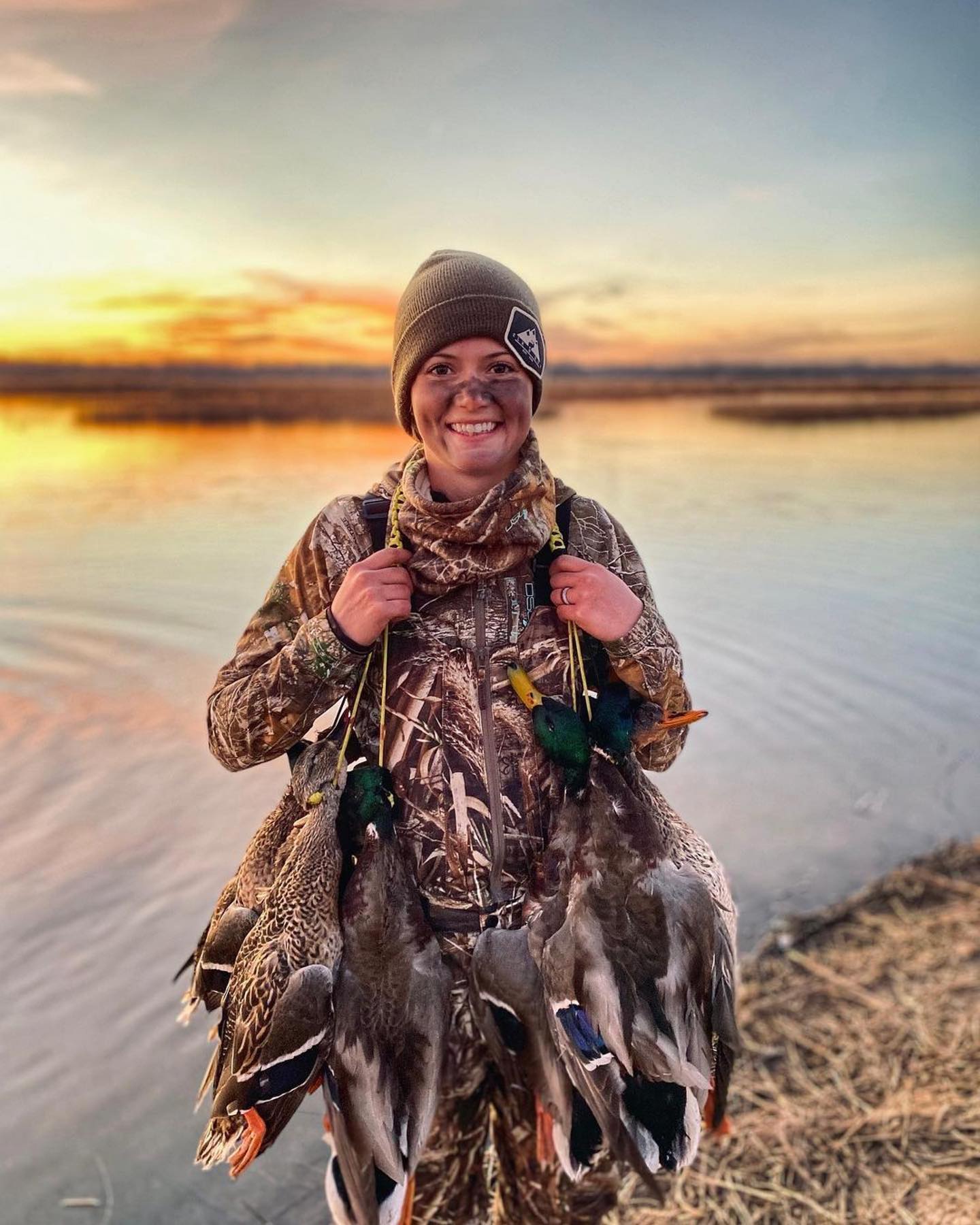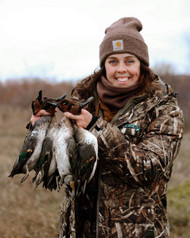6 Quick Tips for Waterfowl Hunters
Posted by Samantha Simma on Nov 30th 2021
There’s nothing like the eager anticipation of watching a flock of waterfowl get ready to land amidst a spread of decoys. The challenge is waiting until the perfect moment to start shooting, and it requires a great deal of patience! But beyond patience, successful waterfowl hunting requires that a variety of skills come together at once. Start developing these skills and take the path to success in the field, by following these tips.
Pick a Place
Get strategic about where you choose to hunt. By doing some scouting, you can begin to understand the patterns of your prey and the habitat they choose under certain conditions. When you scout an area, consider the food sources that are attracting the birds. Learn to identify different types of food sources, and you’ll become well-versed at identifying areas with high waterfowl potential even if the zone is new to you.
Between feedings, birds will look to rehydrate, so get familiar with local water sources and determine which bodies of water the birds prefer. You’ll likely find that smaller waterways are easier to hunt—just set up a blind on the shoreline and disperse a few decoys nearby to give small flocks the confidence to come in close. During your scouting, pay attention to the direction that birds originate from, this will help you position yourself for those flight patterns.

Deploy Some Decoys
Decoys are a worthy investment for any waterfowl hunter. The role of decoys is to provide birds with the illusion of safety in numbers. While building your decoy inventory, purchase the most realistic decoys you can afford and aim for some variety. Not only will you want the species you’re hunting in your spread, but you can create a more realistic setup by adding a few outliers as well. Finally, purchase decoys in a variety of stances—including feeder, rester, and sleeper decoys.
When arranging your decoys, allow the incoming birds some potential landing spots amidst your spread. If you have the opportunity to place decoys on water, walk through the water to muddy it up, which would happen naturally if the birds were feeding. Meanwhile, a jerk cord on decoys in the water will help you mimic the real-life bobs of birds and create attention-grabbing ripples on the water.
Call Them Close
Calling may be the most daunting part of waterfowl hunting, and its crucial to your craft. You can never spend too much time practicing your bird calls. By fine tuning your skills before heading out to hunt, you can greatly improve your chances at success. There’s a finesse to calling, not just in terms of the types of calls, but their cadence and volume as well. Many beginner waterfowl hunters will get overzealous with their calling. Instead, employ calls to entice curiosity from the birds overhead or to call in flock on your periphery.
You can better understand the dance that is calling in birds by first observing their natural sounds without contributing yourself. Pay attention to the variety of calls that birds make to each other and under what circumstances. While step one is learning how to operate a call, step two is understanding when and how much to use it. As you observe the natural behavior of the birds you’re after, you’ll be able to gauge when to call versus cease calling.

Commit to Concealment
Waterfowl hunters must fully commit to methods of concealment. The vision of waterfowl is their greatest defense against predators, and it allows them to see in detail at great distances. This means that head to toe camo is essential, and the closer your camo matches your hunting surroundings the better. Fortunately, many DSG favorites and new gear items have been adapted to include the Realtree Max-5® Pattern. Designed with waterfowlers in mind, this camouflage pattern is filled with cattails, reeds, cane, and grasses to blend into flooded marshes.
In addition to your gear choices, many waterfowl hunters will use face paint to help break up the reflection given off by their face or hands (if exposed). It’s also worth considering the type of hunting you’ll be doing when purchasing a shotgun. If possible, avoid firearms with shiny finishes and opt for a camouflaged shotgun if you can. Like any type of hunting, concealment includes keeping quiet and minimizing your movements. For the impatient individual, this can be the most challenging part of the sport!
Follow the Flight
There’s a big difference between shooting at a stationary or moving target, and most of the time, in the world of waterfowl, your target will be on the move. It’s important to not only practice, but to emulate these conditions in practice. When you can, get out and do some skeet shooting, which will help you learn to move with your target. Timing is essential when you’re following your prey’s trajectory, and you’ll want to make your movements as fluid as a duck’s flight across the sky.
Finally, you need to become intimately familiar with your firearm and how it performs. This includes how it patterns with different types of ammunition. Individual firearms have their nuances, and you’ll get to know yours best through practice sessions. The more you know your gun and its tendencies, the better success you’ll have in the field.

Try Something New
Hunters pursuing any and all types of prey will tell you that most of your skills will be developed from first-hand experience. While you can start with these general tips, there’s nothing more valuable than time in the field putting these tips into practice. Plus, you won’t truly know what works for you and the environment you’re hunting in until you try new things, so don’t be afraid to try something new when the basics aren’t working. Every time you head out hunting, you’ll learn something, so a great way to track what works and what doesn’t is by keeping a hunting journal. Inside it, detail the circumstances and conditions of the hunt, and the end result. In doing so, you’ll be able to fine tune your future efforts over time.

